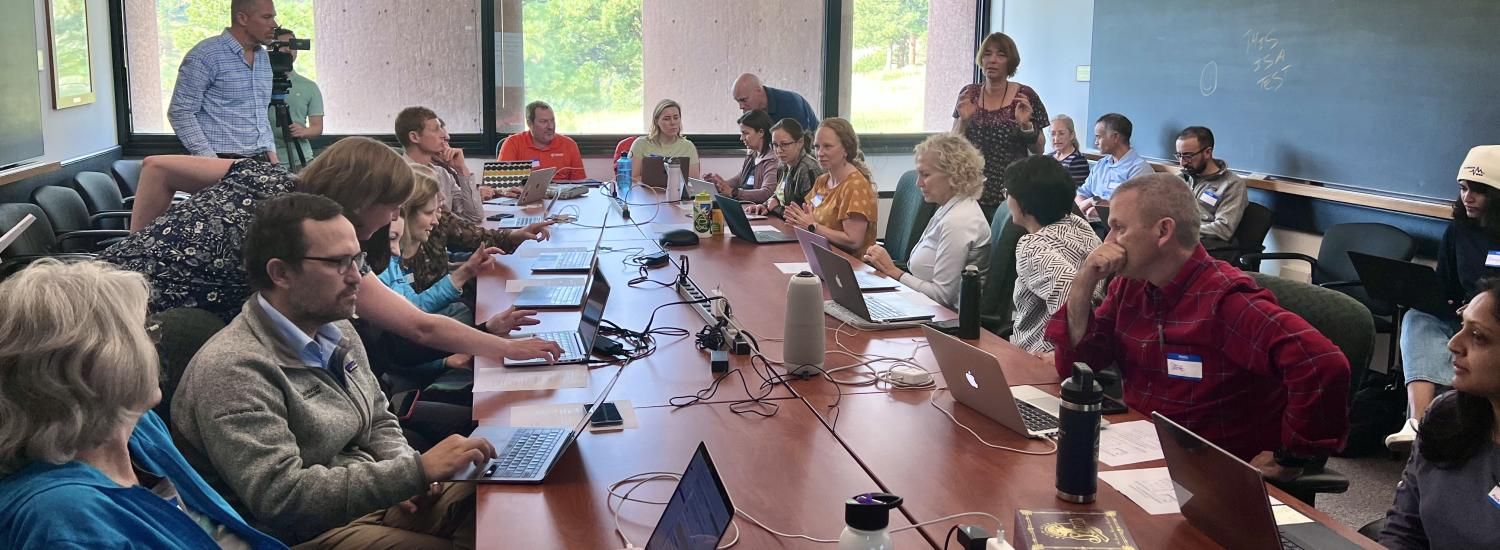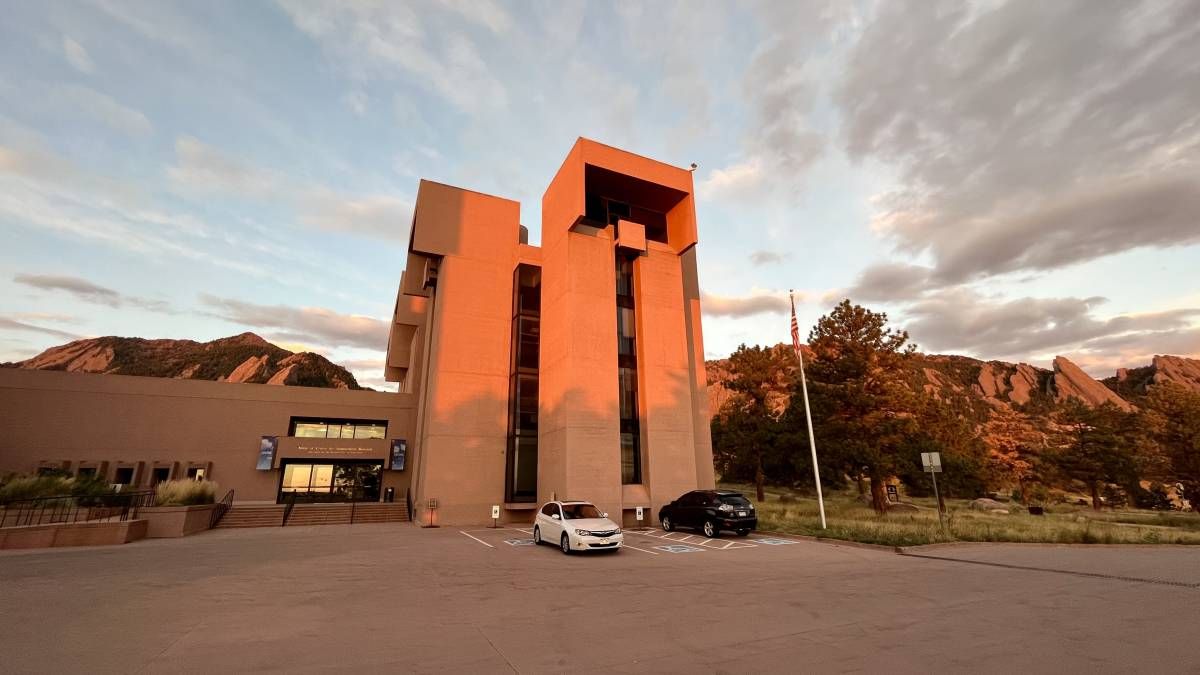Physicians become climate modelers for a day, advocates for the future
Workshop gives doctors unprecedented insight into climate prediction, arms them with tools to help communities in need, support research

Last Thursday morning, 20 medical doctors from across the country walked up a refreshingly steep hill and into the National Center for Atmospheric Research (NCAR) Mesa Laboratory to meet with world-class climate scientists from CIRES and NCAR. The physicians would spend the day plugging variables into a state-of-the-art climate model to see, for example, how fossil fuel burning or wildfire pollution might impact climate warming in the coming decades.
“We’re going to make you work today,” said Kris Karnauskas, CIRES fellow, Associate Professor of Atmospheric and Oceanic Science at CU Boulder and faculty instructor in CU Anschutz’s Diploma in Climate Medicine program, as he stood in front of the group in a conference room overlooking the Flatirons. “Any cardiologists in the room? If you were going to teach us about the heart, maybe you’d show us a real one, maybe even let us touch it. That’s what we are doing today: letting you touch the heart of climate prediction—running a real global climate model.”

NCAR MESA LABORATORY, BOULDER.
“We are going to turn you into climate scientists,” said Cecile Hannay, NCAR associate scientist. Hannay led the group through a detailed, hands-on tutorial: the MDs pored over their laptops—carefully punching in high-level programming codes representing specific climate and weather conditions. They were trying to understand how small perturbations, like a minor change in temperature or air chemistry, can make big impacts on long term climate projections—a concept known as the “butterfly effect.”
Thursday’s workshop was wrapped into a larger effort, a week-long conference part of the Diploma in Climate Medicine professional development program run out of the CU Anschutz Climate & Health program. The program offers clinicians the chance to complete professional certificates for distinction, expertise and leadership in the growing space of climate and medicine—inspiring and arming medical professionals with the tools to respond accordingly to future climate-related threats to human health.
“Hands-on training and interdisciplinary collaboration is crucial for health professionals as they develop credible, knowledgeable, and influential voices while advancing smart, patient-centric policy in climate and healthcare,” said Bhargavi Chekuri, MD, co-director of the Diploma in Climate Medicine program. “By building a strong foundation and fluency in climate science, these healthcare leaders can effectively translate why and how climate change is harming human health to community members and key stakeholders.”
“Not only do I have personal experiences with climate disasters like wildfires, but I also have and work with children, who are heavily impacted by the health impacts of climate change,” said Maddy Keenan, MD, a Pediatric Resident at Children’s Hospital Colorado and one of the doctors at the workshop. “I see high rates of asthma and respiratory illnesses, especially in redline neighborhoods, as well as higher hospitalizations, morbidity and more complex disease.”
Doctors may refer to greenhouse gas projections and other climate graphs when putting these rates into context. “During this workshop, they made their own graphs that look an awful lot like the ones they and their contemporaries might see while leafing through the IPCC report,” said Karnauskas, also an advisory board member of the Anschutz Climate & Health Program. “Now they know exactly what goes into that: the real story behind the graph.”
Knowing the story behind the graph means doctors like Sherrill Brown, MD, Medical Director of Infection Prevention at AltaMed Health Services in Los Angeles and another participating physician, can expand their understanding of the climate health crisis, and bring it back to their communities. “I work at a health center for underserved communities who are more heavily impacted by climate disaster, pollution and heat stress, and they haven’t yet allocated much effort to education and climate adaptation. I want to learn how to bring this knowledge back to my community and my work,” said Brown. “I also have two small children, and I want to make sure climate is in a place where they can live in the future.”
“Arming medical doctors with authentic knowledge of climate science is crucial for both research and medicine, and for the next generation of health practitioners to recognize the emerging face of climate change in medicine and public health” said Karnauskas. “Through programs like this, and through essential messengers like doctors, we hope to continue building trust between science, the public, and policymakers.”

CIRES' KRIS KARNAUSKAS GUIDES A PARTICIPATING DOCTOR THROUGH A CLIMATE MODEL TUTORIAL.